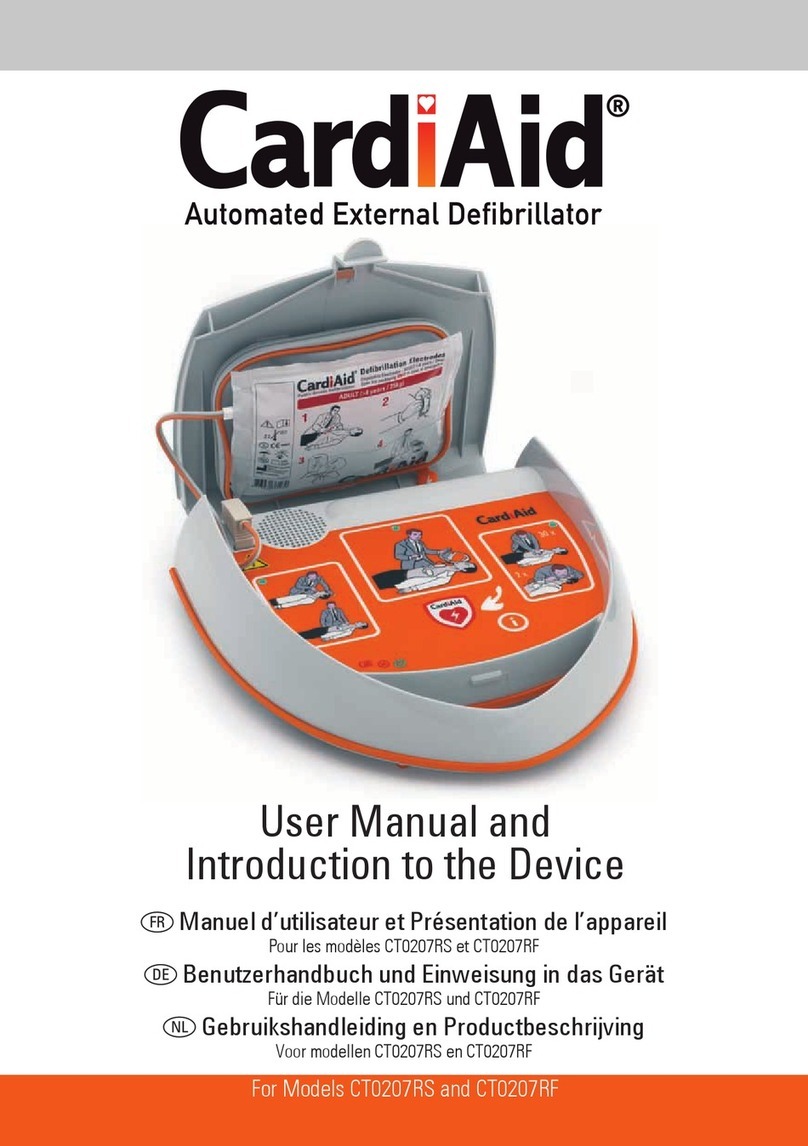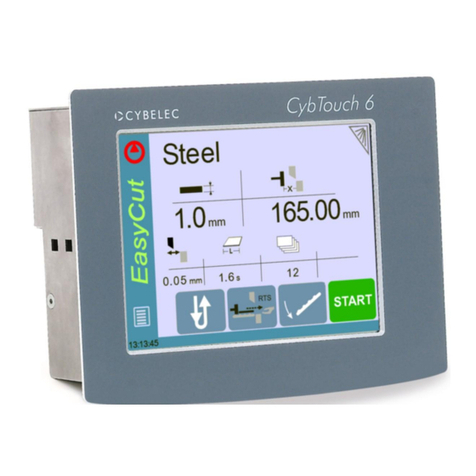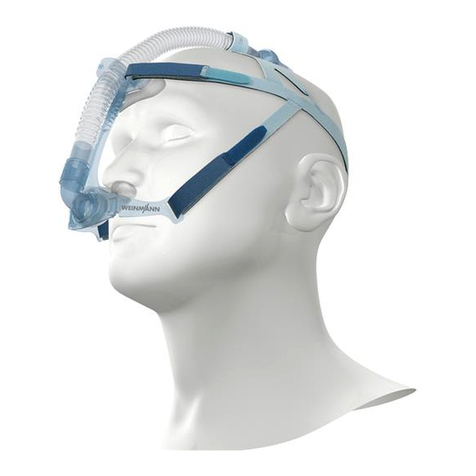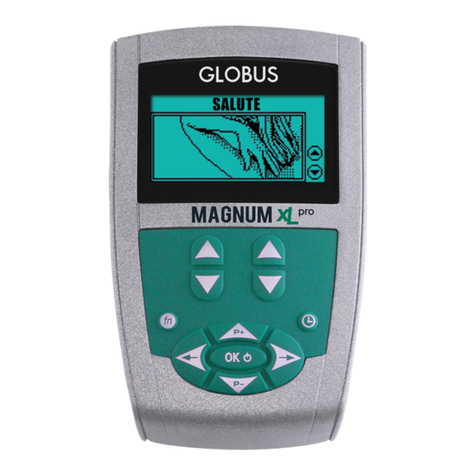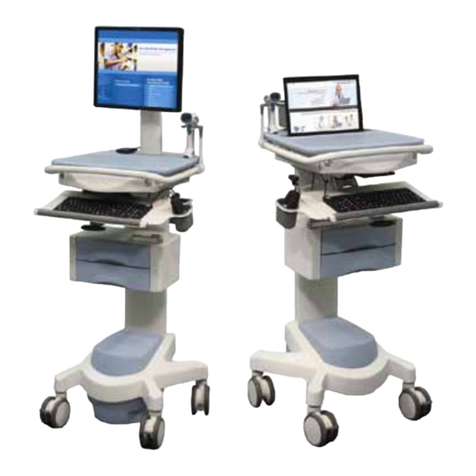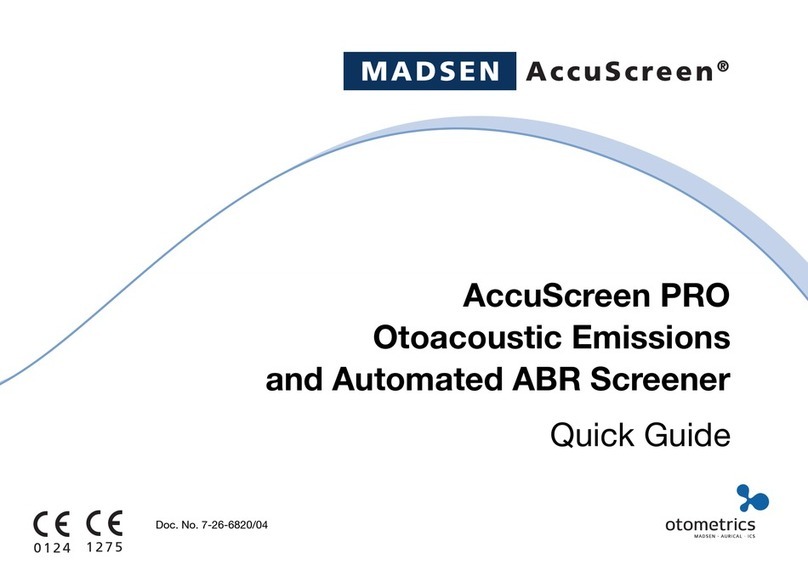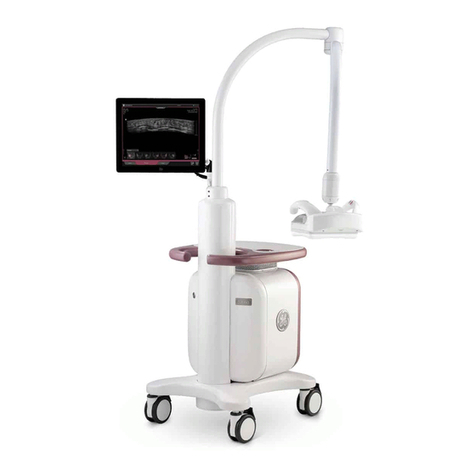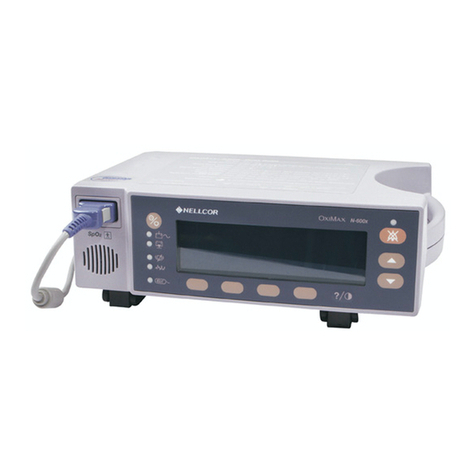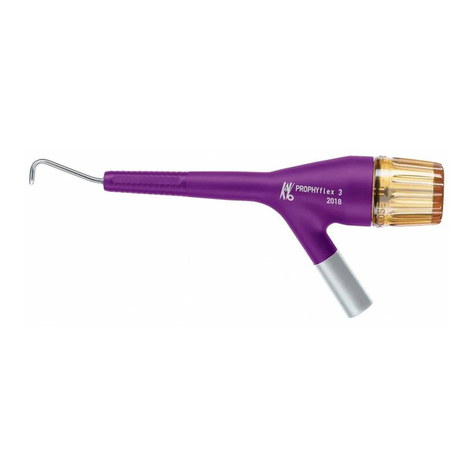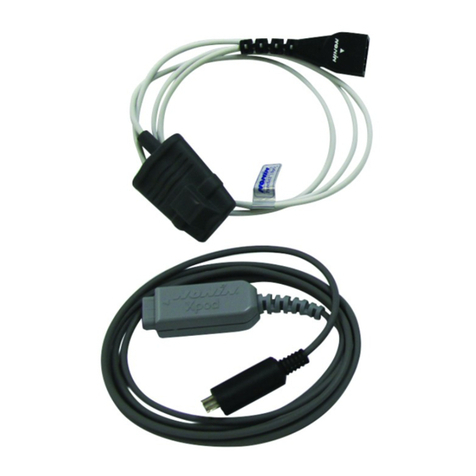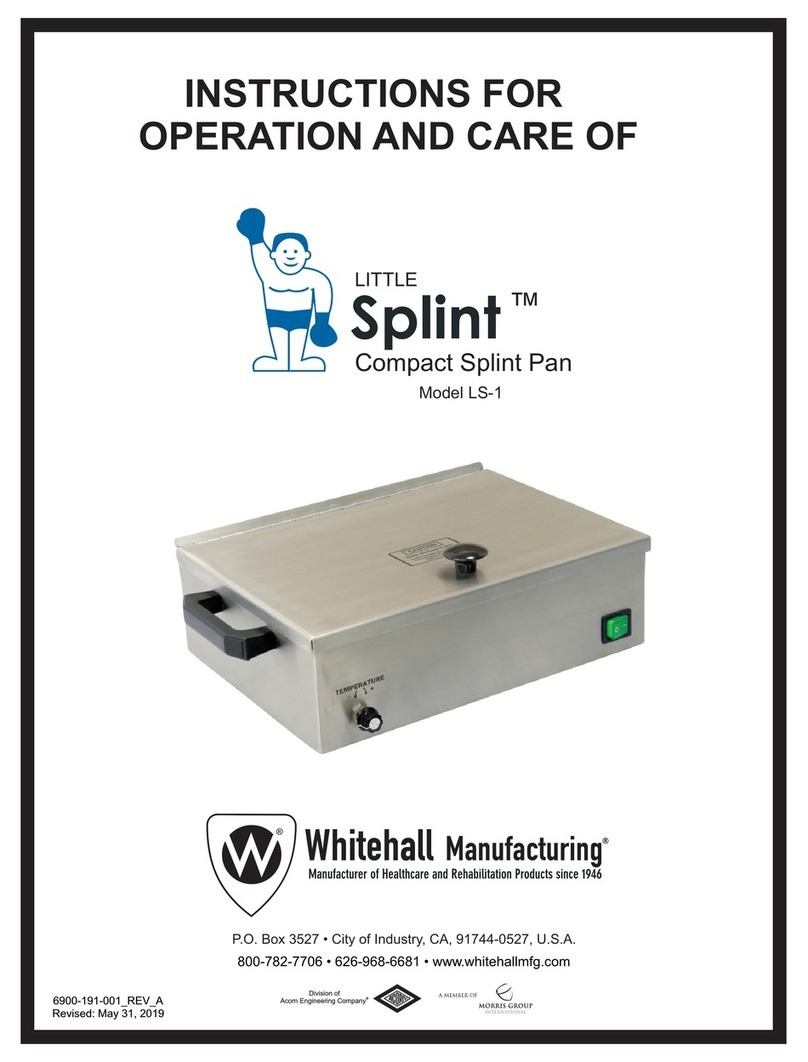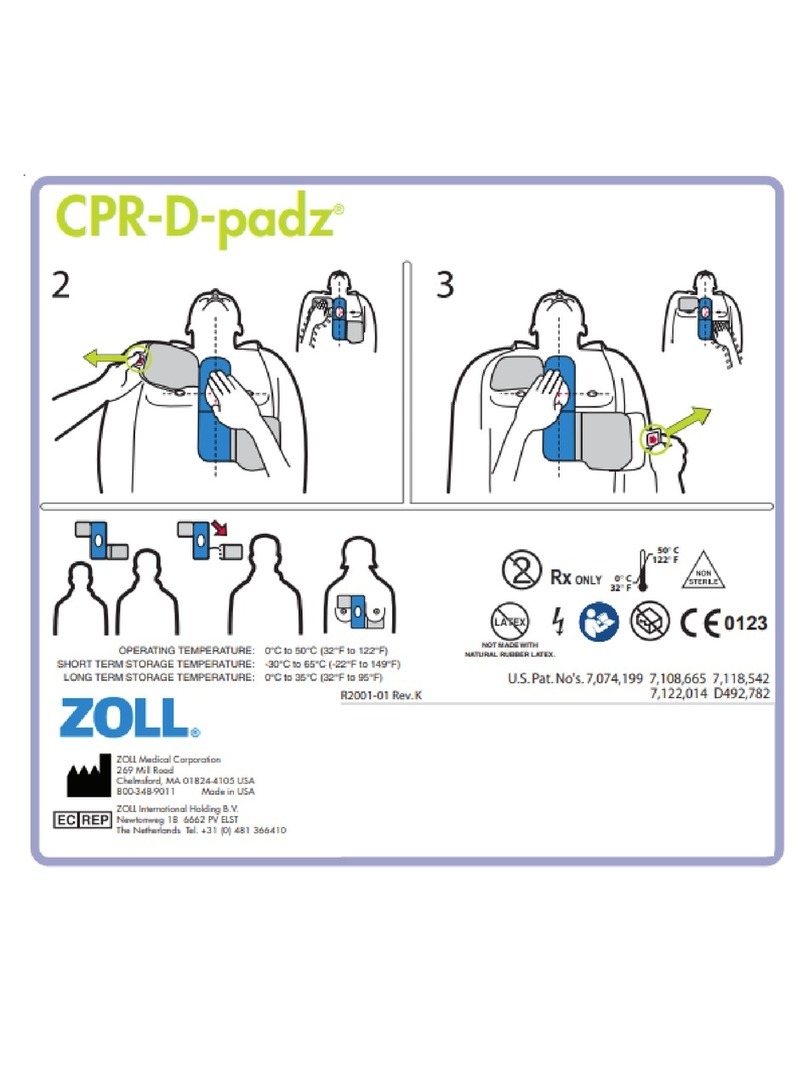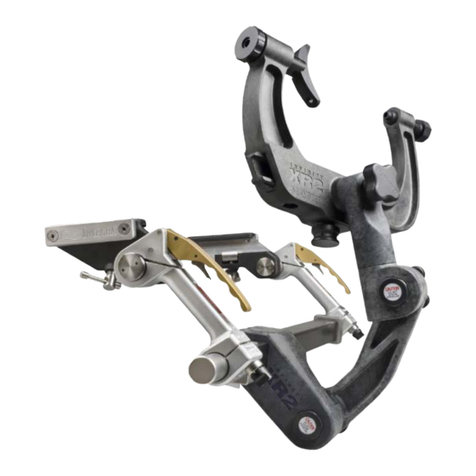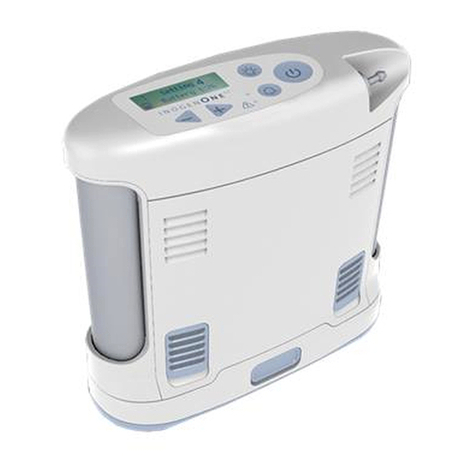
30 31
Handhabung
Vor Gebrauch des Instruments
1Sicherstellen, dass die Magazingröße mit der Instrumentengröße übereinstimmt (z. B. ein ECHELON 60 Magazin nur mit einem
ECHELON 60 Instrument verwenden).
2Mit dem Zeigefinger an der Einstellvorrichtung des Drehgriffs ziehen und das Instrumentenmaul mit der anderen Hand abwinkeln (Abbildung 2),
um sich mit dem Gelenkmechanismus des Instruments vertraut zu machen. Wenn in beliebiger Richtung lateraler Druck ausgeübt wird, lässt
sich das Instrumentenmaul auf bis zu maximal 45° abwinkeln. An dieser Stelle nimmt der Kraftaufwand zu, woran zu erkennen ist, dass die
maximale Abwinkelung erreicht wurde. Den lateralen Druck aufrechterhalten und dabei den Drehgriff loslassen, um den Winkel zu fixieren.
Nachdem Magazinlager und Gegenlager fixiert wurden, den lateralen Druck aufheben. Das Instrumentenmaul wird außerdem bei ca. 15 und
30 Grad fixiert, wenn der Drehgriff losgelassen wird, bevor das Instrument ganz abgewinkelt wurde. Um das Instrumentenmaul wieder zu
begradigen, an der Einstellvorrichtung des Drehgriffs ziehen, um so die Fixierung zu lösen. Magazinlager und Gegenlager kehren automatisch
in die Ausgangsposition zurück.
3Vor Gebrauch des Instruments ist die Kompatibilität aller Instrumente sowie des Zubehörs zu überprüfen (siehe Warnungen und
Vorsichtsmaßnahmen).
Vorbereitung des Instruments
4Instrument, Batterie und Magazin in steriler Technik den Verpackungen entnehmen. Nicht in „Peeling“-Technik auf das sterile Feld des
Instrumententisches werfen, um Beschädigungen zu vermeiden.
5Vor Verwendung des Instruments die Batterie einsetzen. Hierzu müssen die Entriegelungsknöpfe an der Batterie mit den Aussparungen des
Batteriefachs auf der Rückseite des Instruments ausgerichtet sein (Abbildung 3). Sicherstellen, dass die Batterie vollständig in das Gerät
eingesetzt ist. Die Batterie sollte hörbar einrasten.
Hinweis: Das Instrument muss innerhalb von 12 Stunden nach Einsetzen der Batterie verwendet werden. Für Anweisungen zur Entsorgung
der Batterie ist der Abschnitt Entsorgung der Batterie zu beachten.
6Vor dem Einsetzen des Magazins sicherstellen, dass das Instrument geöffnet ist (Abbildung 1).
7Das Magazin auf Vorhandensein eines Klammerschutzes überprüfen. Fehlt dieser, so ist das Magazin zu entsorgen.
Achtung: Die Gewebedicke sollte sorgfältig überprüft werden, bevor das Instrument eingesetzt wird. Zur Auswahl des korrekten
Magazins ist die Tabelle mit den Bestell-Nummern der Magazine zu beachten.
Achtung: Die Auswahl eines neuen Magazins sollte sowohl von der Gewebestärke als auch von der Dicke der Nahtwiderlager abhängig
gemacht werden. Bei Einsatz in Verbindung mit Nahtwiderlagern kann ein erhöhter Kraftaufwand beim Schließen des Instruments erforderlich
sein. Auch ist das Instrument eventuell nicht so oft nachladbar. Bei Hinzuziehen von Nahtwiderlagern ist die Gebrauchsanweisung des Herstellers
zu beachten.
8Das Magazin in das Magazinlager einlegen, bis der Führungszapfen in der Zapfenverriegelung einrastet. Anschließend Klammerschutz
entfernen und entsorgen. (Abbildung 4) Das Instrument ist nun geladen und einsatzbereit.
Achtung: Nach Entfernen des Klammerschutzes ist die Oberfläche des neuen Magazins zu überprüfen. Sind anstelle der Klammern die
farbigen Klammertreiber sichtbar, muss das Magazin durch ein neues ersetzt werden. (Wenn die farbigen Klammertreiber sichtbar sind,
ist das Magazin unzureichend mit Klammern beladen.)
Handhabung des Instruments
9Magazinlager und Gegenlager durch vollständiges Heranziehen des Verschlusshebels an den Instrumentengriff schließen (Abbildung 5).
Ein hörbares Klicken zeigt an, dass der Verschlusshebel und das Instrumentenmaul geschlossen sind. Wenn das Instrumentenmaul
geschlossen ist, sind die rote Sperre des Auslöseschalters und der Auslöseschalter zugänglich.
Hinweis: Zu diesem Zeitpunkt nicht die rote Sperre des Auslöseschalters oder den Auslöseschalter betätigen. Das Instrument wurde
möglicherweise bereits teilweise oder vollständig ausgelöst und muss vor dem Einsatz am Gewebe neu geladen werden.
10 Sicherstellen, dass das Magazin korrekt in das Instrument eingesetzt wurde. Instrument über einen geeigneten Trokar oder eine Inzision
in den Körper einführen (Abbildung 6). Bei Verwendung eines Trokars müssen das Instrumentenmaul die Trokarhülse sichtbar passiert
haben, bevor es geöffnet wird.
Achtung: Zum Einführen und Entfernen der abwinkelbaren Instrumente muss das Instrumentenmaul gerade und parallel zum Schaft des
Instruments ausgerichtet sein. Andernfalls lässt sich das Instrument schwer einführen oder entfernen und könnte beschädigt werden.
Achtung: Beim Einführen des Instruments über einen Trokar oder eine Inzision nicht versehentlich die rote Sperre des Auslöseschalters oder
den Auslöseschalter betätigen. Das Instrument wurde möglicherweise bereits teilweise oder vollständig ausgelöst und muss vor dem Einsatz
am Gewebe neu geladen werden. Wurde der Auslösevorgang nicht vollständig durchgeführt, muss das Instrument entfernt und der Knopf
zum Zurückziehen der Schneidklinge nach vorne geschoben werden, um die Schneideklinge wieder in die Ausgangsposition zu bringen
(Abbildung 7). Zum Öffnen des Instrumentenmauls den Verschlusshebel an den Griff heranziehen und halten und dabei gleichzeitig einen der
sich an beiden Seiten des Instruments befindlichen Freigabeknöpfe drücken (Abbildung 8a). Während weiterhin Druck auf den Freigabeknopf
ausgeübt wird, den Verschlusshebel langsam loslassen (Abbildung 8b). Das gebrauchte Magazin durch ein neues ersetzen (siehe „Laden des
Instruments“). Nachdem das Instrument vollständig ausgelöst wurde, kehrt die Schneidklinge automatisch wieder in ihre Ausgangsposition
zurück. Das Instrument entfernen und ein neues Magazin einsetzen (siehe „Laden des Instruments“).
Hinweis: Lässst sich die Schneidklinge mit dem entsprechenden Knopf nicht in ihre Ausgangsposition zurückbringen und das
Instrumentenmaul öffnet sich nicht:
a. Zuerst sicherstellen, dass die Batterie fest eingesetzt ist und das Instrument mit Strom versorgt wird (Abbildung 9). Dann den
Knopf zum Zurückziehen der Schneidklinge erneut betätigen (Abbildung 7).
b. Wird die Schneideklinge noch immer nicht zurückgezogen, den manuellen Freigabehebel verwenden. Nachdem der Freigabehebel
verwendet wurde, ist das Instrument deaktiviert und kann nicht mehr ausgelöst werden. Zur Verwendung des manuellen Freigabehebels
die mit „Manual Override“ beschriftete Zugangsabdeckung oben am Instrumentengriff entfernen. Der manuelle Freigabehebel ist nun
zugänglich. Den Hebel bis zum Anschlag vorwärts und rückwärts bewegen. (Abbildung 10) Die Schneidklinge befindet sich nun in ihrer
Ausgangsposition, was an der Position des Schneidklingen-Indikators an der Unterseite der Gegenlagers zu erkennen ist (Abbildung 11).
Instrument entsorgen.
11 Nach Einbringen des Instruments den Verschlusshebel heranziehen und halten und dabei gleichzeitig einen der sich an beiden Seiten des
Instruments befindlichen Freigabeknöpfe drücken (Abbildung 8a). Während weiterhin Druck auf den Freigabeknopf ausgeübt wird, den
Verschlusshebel langsam loslassen, so dass er sich zurück in seine Ausgangsposition bewegt und das Instrumentenmaul geöffnet wird
(Abbildung 8b).
12 Gegebenenfalls mit dem Zeigefinger auf die Einstellvorrichtung des Drehgriffs drücken und Druck nach oben oder unten ausüben,
um das Instrumentenmaul zu drehen (Abbildung 12). Das Instrumentenmaul kann in jede Richtung gedreht werden.
13 Um das in den Körper eingeführte Instrumentenmaul abzuwinkeln, eine geeignete Oberfläche (Körperstruktur, Organ oder anderes
Instrument) als Stützfläche wählen. Dabei darauf achten, dass das Instrumentenmaul im Sichtfeld bleibt. Die laterale Seite des
Instrumentenmauls, die der gewünschten Abwinkelungsrichtung gegenüber liegt, an der Stützfläche abstützen (das Instrument kann nur
mit geöffnetem Instrumentenmaul abgewinkelt werden). (Abbildung 13)
WARNUNG: Zum Abwinkeln nicht die Vorderseite des Instrumentenmauls gegen die Stützfläche drücken, da dies zu einer Schädigung
oder einem Trauma des Gewebes führen könnte (Abbildung 14).
Mit dem Zeigefinger an der Einstellvorrichtung des Drehgriffs ziehen und eine schwungvolle Bewegung zu der Seite machen, zu der das
Instrument abgewinkelt werden soll; dabei den Instrumentengriff behutsam gegen die Stützfläche drücken. Während dieses Schritts das
Instrumentenmaul gegen die Stützfläche gedrückt lassen. Nachdem die gewünschte Abwinklung erreicht wurde, den Drehgriff loslassen,
um den Winkel zu fixieren (das Instrument kann nur in bestimmten Winkeln fixiert werden – 15º, 30º und 45º).
Achtung: Das Instrument kann maximal um 45º abgewinkelt werden. Wenn Körperstrukturen oder Organe als Stützfläche verwendet
werden, sollte besonders auf visuelle Hinweise geachtet werden und wie sich das Instrument anfühlt. An einem erhöhten Kraftaufwand
ist zu erkennen, dass die maximale Abwinklung erreicht ist. Keinen übermäßigen Druck auf das Gewebe ausüben, da dies zu einer
Schädigung oder einem Trauma des Gewebes führen könnte.
14 Instrument auf dem zu klammernden Gewebe positionieren.
Achtung: Sicherstellen, dass das Gewebe flach zwischen Magazinlager und Gegenlager liegt und richtig ausgerichtet ist. Eine
Anhäufung von Gewebe am Magazin, insbesondere an der Gabelung von Magazinlager und Gegenlager, kann zu einer unvollständigen
Klammernahtreihe führen.
Die distalen schwarzen Linien am Instrumentenmaul zeigen die beiden Enden der Klammernahtreihe an. Die Linie am Magazinlager mit
der Bezeichnung „cut“ bezieht sich auf die Schnittlänge des Instruments. (Abbildung 1)
Achtung: Beim Positionieren des Instruments am Applikationssitus ist darauf zu achten, dass sich keine Clips, Stents, Führungsdrähte
usw. zwischen Gegenlager und Magazinlager befinden. Dies könnte beim Auslösen zu einem unvollständigen Durchtrennen von Gewebe
und einer mangelhaften Klammerformung führen. Eventuell lassen sich das Instrumentenmaul auch nicht öffnen.
15 Instrumentenmaul in die entsprechende Position zum Gewebe bringen und durch vollständiges Heranziehen des Verschlusshebels an
den Griff schließen (Abbildung 5). Ein hörbares Klicken zeigt an, dass das Instrument geschlossen ist. Wenn das Instrumentenmaul
geschlossen ist, sind die rote Sperre des Auslöseschalters und der Auslöseschalter zugänglich.
Achtung: Sicherstellen, dass sich kein Gewebe hinter der proximalen schwarzen Linie am Instrument befindet (Abbildung 1), da Gewebe,
das proximal zur schwarzen Markierung zu liegen kommt, möglicherweise nur durchtrennt und nicht geklammert wird.
Achtung: Lässt sich der Verschlusshebel nur schwer schließen, ist das Instrument neu zu positionieren und weniger Gewebe zu
fassen. Sicherstellen, dass ein geeignetes Magazin ausgewählt wurde. (Siehe Tabelle mit den Bestell-Nummern der Magazine.)
Achtung: Sollte sich das Instrumentenmaul nicht korrekt schließen lassen, darf das Instrument nicht ausgelöst werden. Das Instrument
entfernen und nicht mehr verwenden.
Achtung: Wird das Instrument in Verbindung mit Nahtwiderlagern eingesetzt, kann ein erhöhter Kraftaufwand beim Schließen des
Instruments erforderlich sein. Bei Hinzuziehen von Nahtwiderlagern ist die Gebrauchsanweisung des Herstellers zu beachten.
Hinweis: Beim Auslösen an starkem Gewebe kann eine bessere Kompression und Klammerausrichtung erreicht werden, wenn das Gewebe
nach dem Schließen und vor dem Auslösen 15 Sekunden lang im Instrumentenmaul gehalten wird.
16 Die rote Sperre des Auslöseschalters zurückziehen, so dass der Auslöseschalter betätigt werden kann (Abbildung 15).
17 Auslösevorgang durch Betätigen des Auslöseschalters initiieren. Der Motor wird hörbar aktiviert (Abbildung 16). Den Auslöseschalter
weiter halten, bis der Motor hörbar stoppt, um die Durchtrennung zu Ende zu führen.
Achtung: Da der Motor auch stoppen kann, wenn das Instrument steckenbleibt, muss sichergestellt werden, dass der Schneidklingen-
Indikator an der Unterseite des Gegenlagers das Ende der Durchtrennung erreicht hat.
Achtung: Wird das Instrument mit zu viel Gewebe oder starkem Gewebe im Instrumentenmaul gewaltsam ausgelöst, kann der Motor
und damit die Schneidklinge zum Stillstand kommen. In diesem Fall den Auslöseschalter loslassen, den Knopf zum Zurückziehen der
Schneidklinge nach vorn schieben und das Instrument entfernen und neu laden (Abbildung 7). Dann mit dem Instrument weniger Gewebe
fassen oder ein Magazin verwenden, das besser geeignet ist (siehe Tabelle mit den Bestell-Nummern der Magazine).
Hinweis: Der Motor läuft langsamer, wenn mehr Kraft auf das Instrument ausgeübt wird.
18 Zum Beenden des Auslösevorgangs den Auslöseschalter loslassen, um den Motor zu aktivieren und die Schneidklinge automatisch in die
Ausgangsposition zurückzubringen, wo der Motor dann stoppt. In dieser Position ist das Instrument gesperrt, bis das Instrumentenmaul
geöffnet und wieder geschlossen wird.
Hinweis: Wenn der Auslösevorgang unterbrochen werden muss oder versehentlich durch Loslassen des Auslöseschalters unterbrochen
wird, den Auslöseschalter erneut betätigen, um fortzufahren. Der Status der Durchtrennung ist während des Auslösevorgangs an dem
Schneidklingen-Indikator an der Unterseite des Instrumentenmauls angezeigt zu erkennen (Abbildung 1). Der Vorgang kann so oft wie
nötig unterbrochen werden, bis die Schneidklinge das Gewebe vollständig durchtrennt hat. Wird der Auslöseschalter an dieser Stelle
losgelassen, kehrt die Schneidklinge automatisch in die Ausgangsposition zurück.
Achtung: Wenn die Sicherheitsautomatik aktiviert wird, stoppt der Motor. Den Auslöseschalter loslassen und den Knopf zum
Zurückziehen der Schneidklinge nach vorn schieben, um die Schneidklinge in ihre Ausgangsposition zu bringen (Abbildung 7). In dieser
Position sollte das Instrument entfernt, geöffnet und neu geladen werden, damit der Vorgang fortgesetzt werden kann. Zum Öffnen des
Instrumentenmauls den Verschlusshebel an den Griff heranziehen und halten und dabei gleichzeitig einen der sich an beiden Seiten des
Instruments befindlichen Freigabeknöpfe drücken (Abbildung 8a). Während weiterhin Druck auf den Freigabeknopf ausgeübt wird,
den Verschlusshebel langsam loslassen (Abbildung 8b). Die Handhabungsschritte zum Laden des Instruments befolgen.
Hinweis: Lässt sich die Schneidklinge mit dem entsprechenden Knopf nicht in ihre Ausgangsposition zurückbringen und das
Instrumentenmaul öffnet sich nicht:
a. Zuerst sicherstellen, dass die Batterie fest eingesetzt ist und das Instrument mit Strom versorgt wird (Abbildung 9). Dann den
Knopf zum Zurückziehen der Schneidklinge erneut betätigen (Abbildung 7).
b. Wird die Schneideklinge noch immer nicht zurückgezogen, den manuellen Freigabehebel verwenden.
Achtung: Nachdem der manuelle Freigabehebel verwendet wurde, ist das Instrument deaktiviert und kann nicht mehr ausgelöst
werden.
Zur Verwendung des manuellen Freigabehebels die mit „Manual Override“ beschriftete Zugangsabdeckung oben am
Instrumentengriff entfernen. Der manuelle Freigabehebel ist nun zugänglich. Den Hebel bis zum Anschlag vorwärts und rückwärts
bewegen. (Abbildung 10) Die Schneidklinge befindet sich nun in ihrer Ausgangsposition, was an der Position des Schneidklingen-
Indikators an der Unterseite des Gegenlagers zu erkennen ist (Abbildung 11). Instrument entsorgen.
Achtung: Ein unvollständiges Auslösen könnte zu einer mangelhaften Klammerformung, zu einer unvollständigen Durchtrennung,
Blutungen und/oder Schwierigkeiten beim Entfernen des Instruments führen.
Achtung: Bei Einsatz in Verbindung mit Nahtwiderlagern sind die Instrumente eventuell nicht so oft nachladbar. Bei Hinzuziehen von
Nahtwiderlagern ist die Gebrauchsanweisung des Herstellers zu beachten.
Hinweis: Das Auslösen des Instruments über einer bereits gesetzten Klammernahtreihe kann die Lebensdauer des Instruments verkürzen.
Achtung: Wenn der Auslösemechanismus nicht funktioniert, darf das Instrument nicht noch einmal zum Einsatz kommen.
19 Zum Öffnen des Instrumentenmauls den Verschlusshebel an den Griff heranziehen und halten und dabei gleichzeitig einen der sich an
beiden Seiten des Instruments befindlichen Freigabeknöpfe drücken. Während weiterhin Druck auf den Freigabeknopf ausgeübt wird,
den Verschlusshebel langsam loslassen. (Abbildung 8)
A88091P00 AMP IFU_1_18_12.indd 30-31A88091P00 AMP IFU_1_18_12.indd 30-31 1/18/12 9:29 AM1/18/12 9:29 AM





















